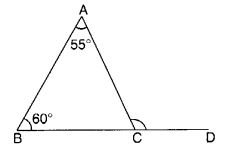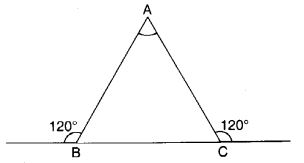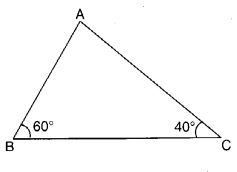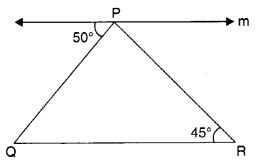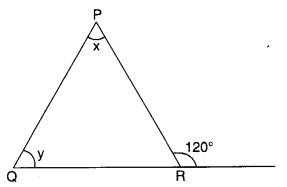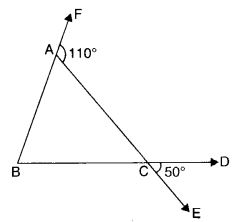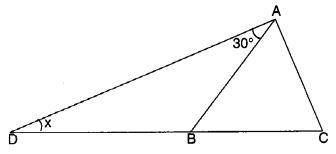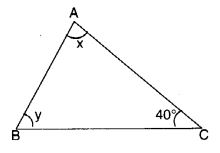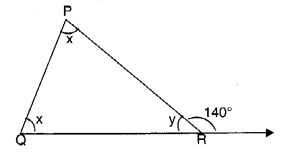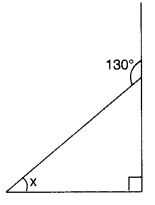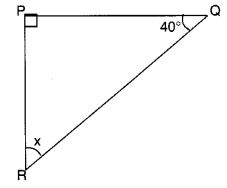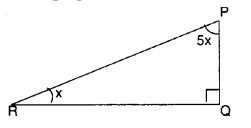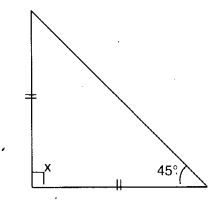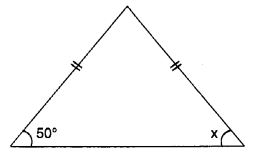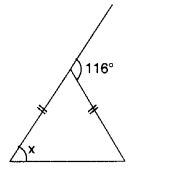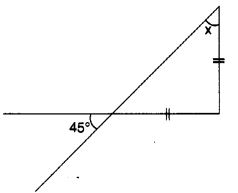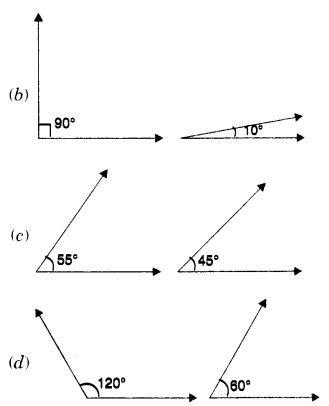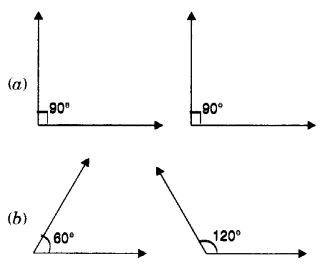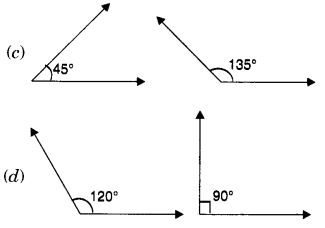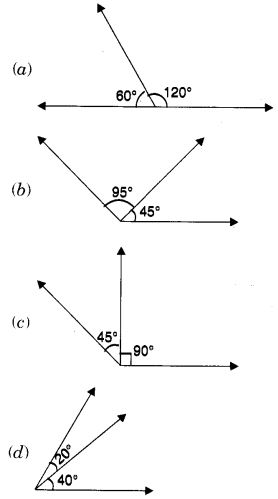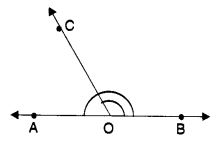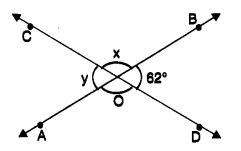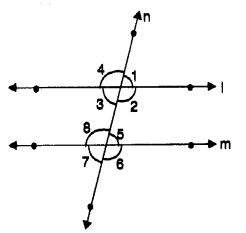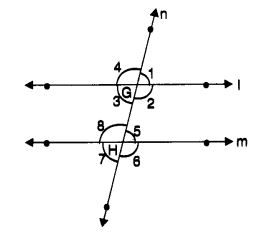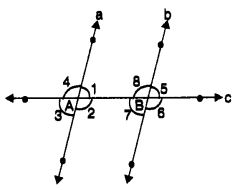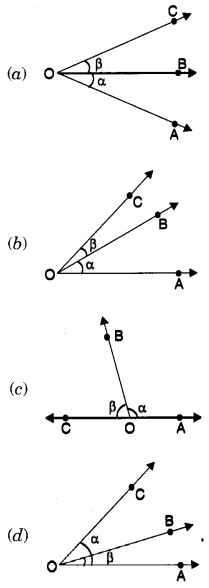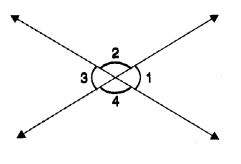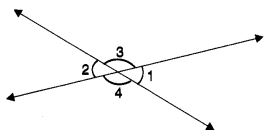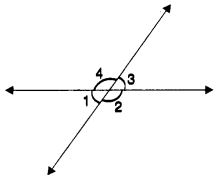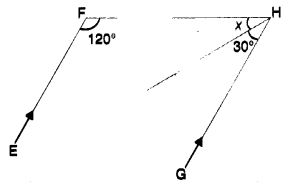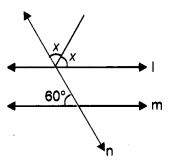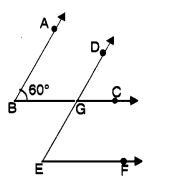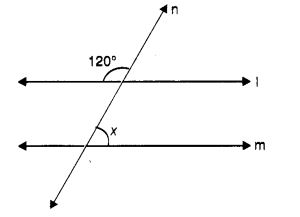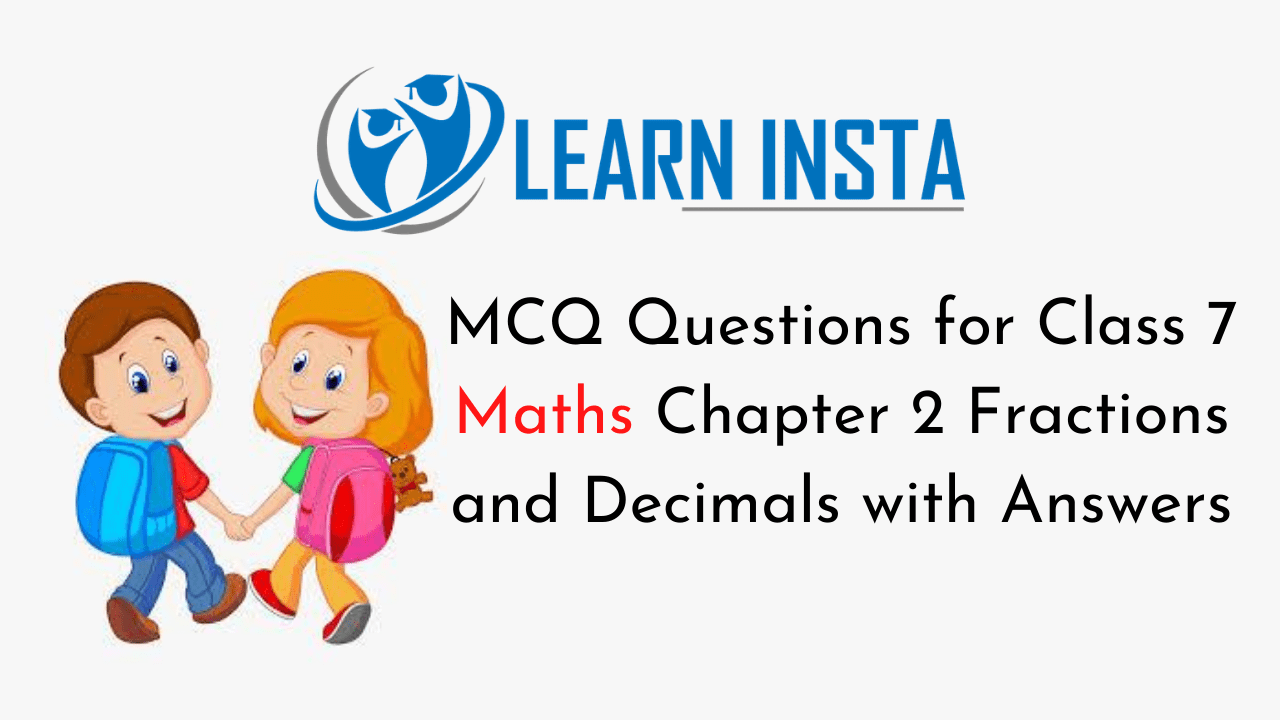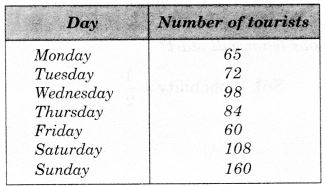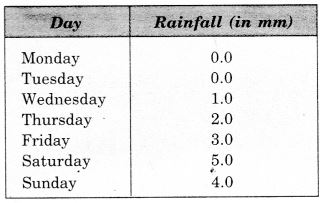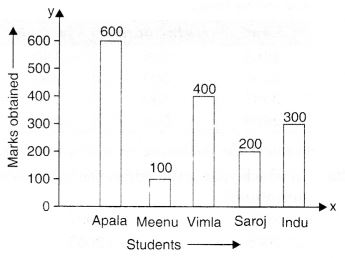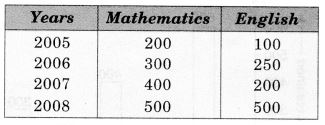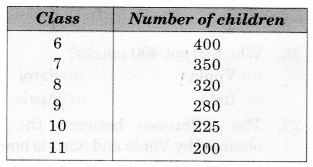Check the below NCERT MCQ Questions for Class 7 Maths Chapter 8 Comparing Quantities with Answers Pdf free download. MCQ Questions for Class 7 Maths with Answers were prepared based on the latest exam pattern. We have provided Comparing Quantities Class 7 Maths MCQs Questions with Answers to help students understand the concept very well. https://mcqquestions.guru/mcq-questions-for-class-7-maths-chapter-8/
Students can also refer to NCERT Solutions for Class 7 Maths Chapter 8 Comparing Quantities for better exam preparation and score more marks.
Comparing Quantities Class 7 MCQs Questions with Answers
Comparing Quantities Class 7 MCQ Question 1.
The ratio of Rs 10 to 50 paise is
(a) 20 : 1
(b) 10 : 1
(c) 5 : 1
(d) 1 : 20
Answer
Answer: (a) 20 : 1
Hint:
Rs 10 : 50 paise = 10 × 100 paise: 50 paise
= 1000 : 50 = 20 : 1
Class 7 Maths Chapter 8 MCQ Question 2.
The ratio of 6 kg to 400 g is
(a) 10 : 1
(b) 15 : 1
(c) 12 : 1
(d) 6 : 1
Answer
Answer: (b) 15 : 1
Hint:
6 kg : 400 g = 6 × 1000 g : 400 g
= 6000 : 400 = 15 : 1.
MCQ On Comparing Quantities Class 7 Question 3.
The ratio of 3 m to 60 cm is
(a) 4 : 1
(b) 3 : 1
(c) 5 : 1
(d) 2 : 1
Answer
Answer: (c) 5 : 1
Hint:
3 m : 60 cm = 3 × 100 cm : 60 cm
= 300 : 60 = 5 : 1.
Class 7 Maths Chapter 8 MCQ With Answers Question 4.
The ratio of 15 days to 72 hours is
(a) 2 : 1
(b) 3 : 1
(c) 4 : 1
(d) 5 : 1
Answer
Answer: (d) 5 : 1
Hint:
15 days : 72 hours
= 15 × 24 hours : 72 hours
= 15 × 24 : 72 = 5 : 1.
Class 7 Maths Ch 8 MCQ Question 5.
The ages of father and son are 45 years and 10 years. The ratio of their ages is
(a) 3 : 2
(b) 5 : 2
(c) 9 : 2
(d) 15 : 2
Answer
Answer: (c) 9 : 2
Hint:
45 years : 10 years ⇒ 9 : 2
MCQ Questions For Class 7 Maths Chapter 8 Question 6.
The cost of 3 envelopes is ₹ 15. Find the cost of 5 envelopes.
(a) ₹ 20
(b) ₹ 25
(c) ₹ 30
(d) ₹ 40
Answer
Answer: (b) ₹ 25
Hint:
3 : 5 = 15 : x
⇒ \(\frac{3}{5}\) = \(\frac{15}{x}\) ⇒ x = 25
MCQ Of Comparing Quantities Class 7 Question 7.
The cost of 7 kg of potatoes is ₹ 42. How many kg of potatoes can be purchased for ₹ 96?
(a) 10 kg
(b) 12 kg
(c) 15 kg
(d) 16 kg
Answer
Answer: (d) 16 kg
Hint:
7. 7 : x = 42 : 96
⇒ \(\frac{7}{x}\) = \(\frac{42}{96}\) ⇒ x = 16
Ncert Class 7 Maths Chapter 8 MCQ Question 8.
The cost of 4 m of cloth is Rs 40. Find the cost of 9 m of cloth.
(a) ₹ 90
(b) ₹ 60
(c) ₹ 50
(d) ₹ 40
Answer
Answer: (a) ₹ 90
Hint:
8. 4 : 9 = 40 : x
⇒ \(\frac{4}{9}\) = \(\frac{40}{x}\) ⇒ x = 90
MCQ On Percentage For Class 7 Question 9.
The cost of 8 pencils is ₹ 10. Find the cost of 20 pencils.
(a) ₹ 20
(b) ₹ 25
(c) ₹ 24
(d) ₹ 30
Answer
Answer: (b) ₹ 25
Hint:
8 : 20 = 10 : x
⇒ \(\frac{8}{20}\) = \(\frac{10}{x}\) ⇒ x = 25
Class 7 Math Chapter 8 MCQ Question 10.
A motorcycle goes 120 km in 3 l of petrol. How much petrol will be required to go 600 km?
(a) 10 l
(b) 12 l
(c) 15 l
(d) 20 l
Answer
Answer: (c) 15 l
Hint:
120 : 600 = 3 : x
⇒ \(\frac{120}{600}\) = \(\frac{3}{x}\) ⇒ x = 15
Class 7 Maths Chapter 8 Extra Questions Question 11.
\(\frac { 1 }{ 4 } \) as per cent is
(a) 20%
(b) 25%
(c) 30%
(d) 12 \(\frac { 1 }{ 2 } \)%
Answer
Answer: (b) 25%
Hint:
\(\frac{1}{4}\) = \(\frac{1}{4}\) × 100% = 25%
Class 7 Comparing Quantities MCQ Question 12.
\(\frac { 1 }{ 8 } \) as per cent is
(a) 25%
(b) 121%
(c) 20%
(d) 16%
Answer
Answer: (b) 121%
Hint:
\(\frac{1}{8}\) = \(\frac{1}{8}\) × 100% = 12\(\frac{1}{2}\)%
Class 7 Maths Chapter 8 Test Paper Question 13.
\(\frac { 5 }{ 2 } \) as per cent is
(a) 125%
(b) 150%
(c) 200%
(d) 250%
Answer
Answer: (d) 250%
Hint:
\(\frac{5}{2}\) = \(\frac{5}{2}\) × 100% = 250%
Comparing Quantities Class 7 Extra Questions Question 14.
0.1 as per cent is
(a) 1%
(b) 10%
(c) 100%
(d) 0.1%
Answer
Answer: (b) 10%
Hint:
0.1 = \(\frac{1}{10}\) = \(\frac{1}{10}\) × 100% = 10%
Class 7 Chapter 8 Maths MCQ Question 15.
0.04 as per cent is
(a) 10%
(b) 20%
(c) 25%
(d) 4%
Answer
Answer: (d) 4%
Hint:
0.04 = \(\frac{4}{100}\) = \(\frac{4}{100}\) × 100% = 4%
Question 16.
\(\frac { 2 }{ 2 } \) as per cent is
(a) 19%
(b) 10%
(c) 100%
(d) none of these
Answer
Answer: (c) 100%
Hint:
\(\frac{2}{2}\) = \(\frac{2}{2}\) × 100% = 100%
Question 17.
Out of 40 children in a class, 10 are boys. What is the percentage of boys?
(a) 10%
(b) 40%
(c) 4%
(d) 25%
Answer
Answer: (d) 25%
Hint:
Percentage of boys = \(\frac{10}{40}\) × 100% = 25%
Question 18.
Out of 25 students, 5 are absent. What per cent of the students are absent?
(a) 10%
(b) 20%
(c) 25%
(d) 30%
Answer
Answer: (b) 20%
Hint:
Per cent of students that are absent = \(\frac{5}{25}\) × 100% = 20%
Question 19.
A shop has 50 televisions, out of which 5 are defective, defective? What per cent are
(a) 5%
(b) 10%
(c) 50%
(d) 25%
Answer
Answer: (b) 10%
Hint:
Percentage of defective television = \(\frac{5}{50}\) × 100% = 10%
Question 20.
There are 100 voters. 50 of them votes yes. What per cent voted yes?
(a) 10%
(b) 25%
(c) 50%
(d) 15%
Answer
Answer: (c) 50%
Hint:
Required percentage = \(\frac{50}{100}\) × 100% = 50%
Question 21.
If 40% of students in a class are Hindus, what per cent of the students are non – Hindus?
(a) 40%
(b) 10%
(c) 50%
(d) 60%
Answer
Answer: (d) 60%
Hint:
100% – 40% = 60%.
Question 22.
A basket is full of bananas, mangoes and apples. If 50% are mangoes, 30% are apples, then what per cent are bananas?
(a) 10%
(b) 20%
(c) 25%
(d) 40%
Answer
Answer: (b) 20%
Hint:
Required percentage
= 100% – (50% + 30%) = 20%.
Question 23.
What is 5% of 200?
(a) 2
(b) 5
(c) 10
(d) 100
Answer
Answer: (c) 10
Hint:
5% of 200 = \(\frac{5}{100}\) × 200 = 10
Question 24.
What is 12 \(\frac { 1 }{ 2 } \) % of 200?
(a) 25
(b) 12
(c) 40
(d) 100
Answer
Answer: (a) 25
Hint:
12\(\frac{1}{2}\)% of 200 = \(\frac{25}{2}\) = \(\frac{200}{100}\) = 25
Question 25.
There are 40 children in a class. 25% like playing football. How many children like playing football?
(a) 10
(b) 20
(c) 30
(d) 40
Answer
Answer: (a) 10
Hint:
Number of children who like playing football = \(\frac{25}{100}\) × 40 = 10
Question 26.
The salary of Manish is ₹ 4000. He saves 10% of his salary. How much does he save?
(a) ₹ 400
(b) ₹ 2000
(c) ₹ 3000
(d) ₹ 4000
Answer
Answer: (a) ₹ 400
Hint:
Money that he saves = \(\frac{10}{100}\) × 4000 = Rs 400
Question 27.
Convert \(\frac { 1 }{ 5 } \) to per cent
(a) 10%
(b) 20%
(c) 40%
(d) 80%
Answer
Answer: (b) 20%
Hint:
\(\frac{1}{5}\) = \(\frac{1}{5}\) × 100% = 20%
Question 28.
A traveller covered 8% of his total journey which is 50 km long on foot. How many kilometre did he cover on foot?
(a) 1 km
(b) 2 km
(c) 3 km
(d) 4 km
Answer
Answer: (d) 4 km
Hint:
8% of 50 = \(\frac{8}{100}\) × 50 = 4 km
Question 29.
In a particular kind of pulses, the quantity of protein is 25%. How much protein is there in 4 kg of that pulse?
(a) 1kg
(b) 2kg
(c) 3kg
(d) 4kg
Answer
Answer: (a) 1kg
Hint:
Required amount of protein
= \(\frac{25}{100}\) × 4 = 1 kg
Question 30.
Meenu purchased a coat for 7 600. She had to pay 4% sales tax on it. Find the amount of sales tax.
(a) ₹ 24
(b) ₹ 16
(c) ₹ 20
(d) ₹ 32
Answer
Answer: (a) ₹ 24
Hint:
Amount of sales tax
= 600 × \(\frac{4}{100}\) = Rs 24
Question 31.
The price of petrol has risen from ₹ 48 to ₹ 52 a litre. By what per cent has the price risen up?
(a) \(\frac { 25 }{ 3 } \) % or 8.33%
(b) 25%
(c) 4%
(d) 40%
Answer
Answer: (a) \(\frac { 25 }{ 3 } \) % or 8.33%
Hint:
Required percentage
= \(\frac{52-48}{48}\) × 100% = \(\frac{25}{3}\) % or 8.33%.
Question 32.
₹ 100 are to be divided between Apala and Meenu. Apala gets 60%. What does Meenu get?
(a) ₹ 10
(b) ₹ 20
(c) ₹ 30
(d) ₹ 40
Answer
Answer: (d) ₹ 40
Hint:
Amount that Meenu gets
= (100% – 60%) × 100
= \(\frac{40}{100}\) × 100 = Rs 40
Question 33.
The angles of a triangle are in the ratio 1 : 1 : 2. What is the largest angle?
(a) 90°
(b) 45°
(c) 30°
(d) 60°
Answer
Answer: (a) 90°
Hint:
Largest angle = \(\frac{2}{1+1+2}\) × 180° = 90°
Question 34.
The marks in a test decreased from 40 to 30. The percentage decrease is
(a) 10%
(b) 20%
(c) 25%
(d) 40%
Answer
Answer: (c) 25%
Hint:
Percentage decrease = \(\frac{40-30}{40}\) × 100% = 25%
Question 35.
The number of students in 2008 was 1000. It became 1100 in 2009. The percentage increase is
(a) 10%
(b) 5%
(c) 100%
(d) 1000%
Answer
Answer: (a) 10%
Hint:
Percentage increase = \(\frac{1100-1000}{1000}\) × 100% = 10%
Question 36.
An article was purchased for ₹ 100 and sold for ₹ 120. What is the profit?
(a) ₹ 20
(b) ₹ 100
(c) ₹ 120
(d) None of these
Answer
Answer: (a) ₹ 20
Hint:
Profit = Rs 120 – Rs 100 = Rs 20.
Question 37.
A watch was purchased for ₹ 316 and sold for ₹ 300. What is the loss?
(a) ₹ 16
(b) ₹ 8
(c) ₹ 24
(d) ₹ 32
Answer
Answer: (a) ₹ 16
Hint:
Loss = Rs 316 – Rs 300 = Rs 16.
Question 38.
A shopkeeper bought a table for ₹ 500 and sold it for ₹ 400. Find the loss percentage.
(a) 10%
(b) 20%
(c) 40%
(d) 50%
Answer
Answer: (b) 20%
Hint:
Loss percentage
= \(\frac{500-400}{500}\) × 100% = 20%
Question 39.
Meenu purchased an item for ₹ 800 and sold the same for ₹ 1000. The gain percentage is
(a) 25%
(b) 20%
(c) 40%
(d) 50%
Answer
Answer: (a) 25%
Hint:
Gain percentage
= \(\frac{1000-800}{800}\) × 100% = 25%
Question 40.
The interest on a sum of ₹ 2500 for 4 years at the interest rate 4% is
(a) ₹ 100
(b) ₹ 200
(c) ₹ 300
(d) ₹ 400
Answer
Answer: (d) ₹ 400
Hint:
Interest = \(\frac{2500×4×4}{100}\) = RS 400.
We hope the given NCERT MCQ Questions for Class 7 Maths Chapter 8 Comparing Quantities with Answers Pdf free download will help you. If you have any queries regarding Comparing Quantities CBSE Class 7 Maths MCQs Multiple Choice Questions with Answers, drop a comment below and we will get back to you soon.


